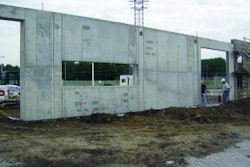A friend who runs a Midwest construction equipment dealership recently shared a disturbing statistic. He was told that 60% of construction business failures weren't due to delinquencies on primary payments; rather, the banks refused to let the companies fall any deeper in debt. In other words, the banks preferred to let them fail rather than take on further risk.
If this statistic is true, it's a scary trend that could get substantially worse before it gets better. Many contractors in the northern half of the U.S. have closed out their regular construction season with minimal or no profit to show for it. For them, surviving the slower winter months will be a struggle at best. Without available operating capital from the banks, how many won't be around come next Spring?
If you're concerned that your company may be at risk, now is the time to be proactive. Speakers at the Associated Equipment Distributors Executive Forum seminar, "The Lending Landscape Panel: Credit Answers for You and Your Customers", emphasized the need to strengthen your company's balance sheet and improve cash flow.
According to Ken Hedlund, principal, Construction and A/E Team, Somerset CPAs, "Banks are not as friendly. They're exercising their right to increase costs for financing. You will have no options if your balance sheet is not improving."
"Banks want to see receivables and payables," agrees John Salek, manager of finance, Fischer Excavating, Rockford, IL. "We've made our company transparent to financiers to ensure our ability to show where we are financially."
The ability to demonstrate future income potential is also a must. "Proactive, timely, accurate statements are critical," says Hedlund. "But today, banks want to see backlog and to be able to predict cash flow."
If cash flow projections are less than what lenders expect, you need to work to get them in line quickly. "If you're going to run out of cash, you must be able to cut costs and have a plan in place," says Hedlund. "If you have a plan, you will be in a better position."
Also examine whether depreciation and other tax credits can help improve your financial outlook. "In the last 12 months, we've seen small contractors who are not even depreciating heavy equipment," says Hedlund. This could be leaving money on the doorstep. For example, he cites a contractor with a $15 million annual volume and $10 million in equipment who was able to add $3 million in equity just by restructuring depreciation.
"There is a lot of hidden equity in [heavy equipment]," notes Jeff Whitcomb, Midwest regional vice president, People's Capital & Leasing Corp.
"Know how to place short- and long-term debt on balance sheets," stresses Salek.
If you find you still have too much debt on the books, get help. This includes communicating the company's position with lenders and creditors. "Banks and creditors don't want surprises," says Hedlund. "Any surprises will change your ability to get credit."
Work with them to develop a plan to pay down the debt. "If they have a level of confidence in management, and you have the right tools in place," says Hedlund, "banks will work with you to restructure credit, free up working capital and ensure cash flow."


















